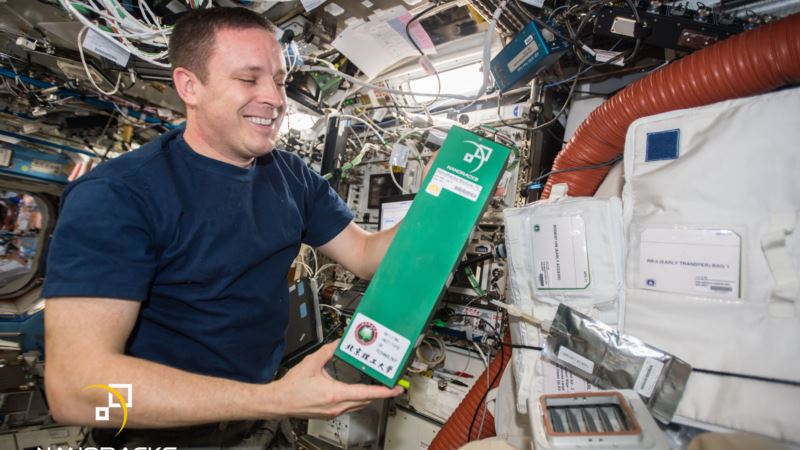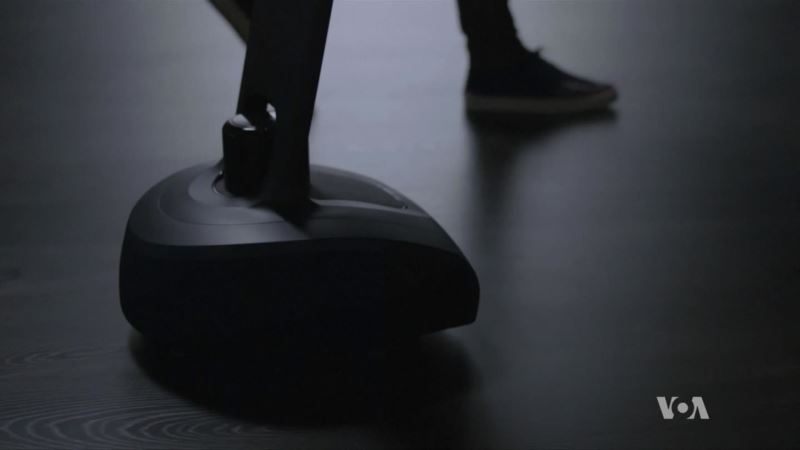Imagine a post office for space. That is the job of U.S. space company NanoRacks. Just down the street from NASA’s Johnson Space Center in Houston, NanoRacks is one of many companies benefitting from the U.S. space program’s support for a broader range of commercial interests. “There has been a shift in federal funding into more of this commercial space transportation program,” said David Alexander, director of the Rice Space Institute and professor of physics and astronomy at Rice University in Houston. “What that has allowed these companies to do is essentially have an anchor client, an anchor customer and then build up their manifest and build up their client base and think of lots of new ways of accessing space for many different purposes,” Alexander added. Watch: US Space Company Makes History with Client from China The space business For a price, NanoRacks can help almost anyone, anywhere send an experiment or small satellite to the International Space Station in orbit around the Earth. The company made history this summer with a client from China. “We’re all about democratizing access to space. It’s really important to me that we involve as many nations as possible,” NanoRacks Chief Executive Officer Jeffrey Manber said. The company has helped deliver space experiments and satellites of customers from 30 countries, including academic institutions in Eastern Europe, Peru and Vietnam. The Beijing Institute of Technology, one of NanoRacks’ latest customers, became the first from China to have an experiment brought onboard the International Space station. “They’re doing an experiment on DNA and how it mutates in microgravity,” Michael Lewis, chief technology officer of NanoRacks, said. The research operation in China did not respond to VOA’s request for an interview, but NanoRacks’ Manber said findings from the Chinese experiment could have groundbreaking implications. “They’ve shown abnormal results when DNA is subjected to space. That could mean, we can’t travel to Mars,” Manber said. Getting Chinese experiment to ISS Getting the Chinese experiment to the International Space Station was complicated because U.S. federal law prohibits NASA from working directly with China because of fears the Chinese could steal U.S. technology. “First we brought it to the Obama administration. They were very concerned there was no ties to the People’s Liberation Army,” Manber said. After two years, NanoRacks received approval from U.S. lawmakers. A statement from NASA said, “NASA complied with all legal requirements to notify the Congress of this activity, and all of the ISS (International Space Station) partners approved the inclusion of the experiment from the Beijing Institute of Technology.” However, there was one stipulation. “We had to make sure that there was no technology transfer. No IT connection to the space station,” Lewis said. “We had a creative solution. We said, ‘OK, we’ll make sure that we plug in the experiment, and it’s not even connected data wise,’” he added. Lewis said the self-contained autonomous Chinese experiment flew to the International Space Station on the SpaceX CRS-11 Dragon spacecraft. The experiment received only power from the space station and spent about three weeks there before returning to Earth. “On the science side, a lot of us scientists would welcome the partnerships. There’re other issues we don’t think about. Much of the Chinese space program is done through the military and the technology development they have gone through in the last few years, again, have been very successful,” Alexander said. Aside from national security concerns, scientists and businesses are pushing for more international collaboration in space. “You can’t do deep space exploration alone. The American government cannot do it without the American private sector, and America cannot do it without international colleagues. It’s too expensive. It’s too longer term,” Alexander said.
US Space Company Makes History With Client from China





